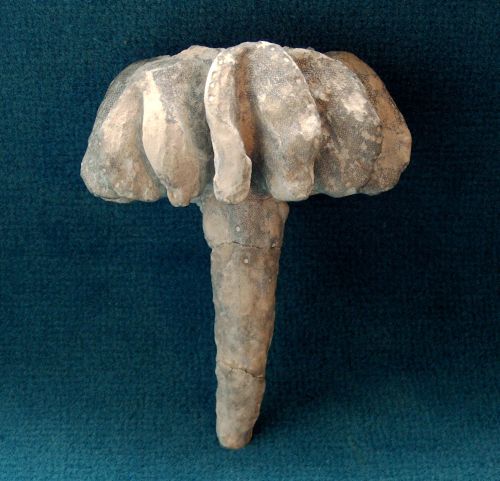

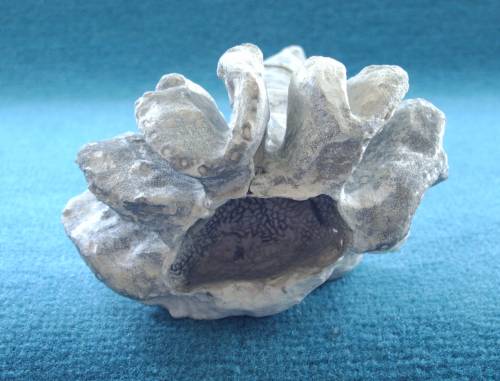
Troegerella subherzynica
Ulbrich 1974
The specimen of Troegerella subherzynica shown here is from Höver and was collected in October 2006. It was the third known specimen of this very rare hexactinellid sponge at the time. The type specimen of Troegerella subherzynica was described by Ulbrich (1974) from the Lower Campanian Ilsenburg marlstone near Stapelburg in the Subhecynian Basin.
The specimen of Troegerella subherzynica shown here in three diffent views consists of a thin-walled (1 mm), obconical stem with hollow, bladelike, in part bifurcated, lateral expansions near its upper end. Parietal oscula occur in rows all along the edges of the bladelike expansions and also on the upper section of the stem. The central upper part of the sponge contains a wide paragaster which extends into the stem. The paragastral cavity is covered by a coarse, cauldron-shaped sieve blade which is bottomimg out near the lower edge of the attached blades. - One side of the specimen is poorly preserved.
The dermal skeleton consists of a very regular meshwork of rectangular, heavily silica-mantled lychnisks. About every second mesh is closed off by additional siliceous grids while the remaining meshes function as inhalent pores with oval apertures. The internal (dictyonal) skeleton is also very regular.
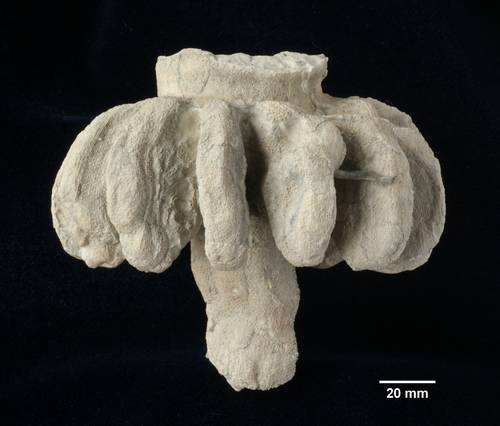
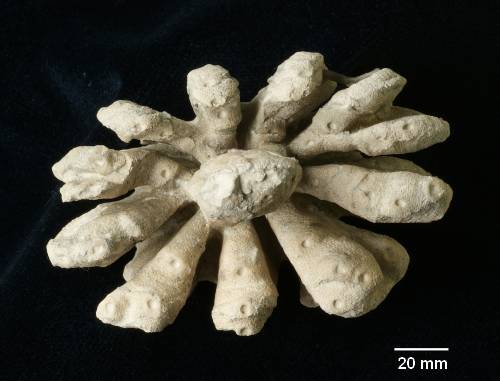
A second specimen of Troegerella subherzynica from Höver, collected in July 2009, is shown here in side and bottom view.
The new specimen of Troegerella subherzynica shows a well developed chimney. Parietal oscula are restricted to the underside of the radial blades and occur sparsely also on the stem.
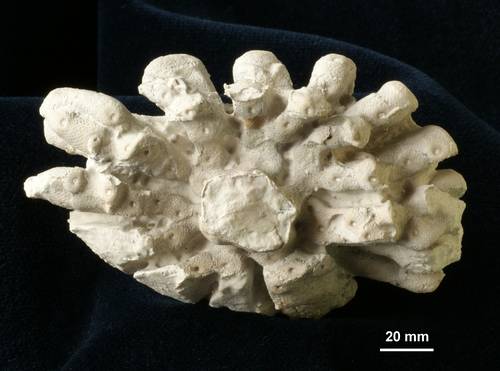
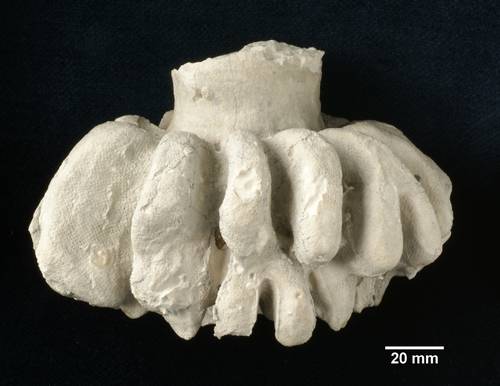
A third specimen of Troegerella subherzynica, also from Höver, shows a somewhat disturbed development. (Bottom and side view)
On one side the lateral expansions show a stepped growth, and on the other side two expansions are incompletely developed. The specimen also shows a well developed chimney. Parietal oscula are restricted to the underside of the radial blades and to the stem.